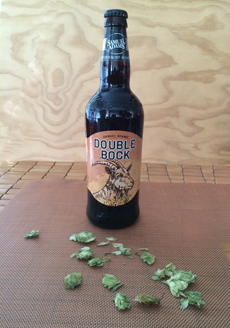FOOD HOLIDAY: National Bock Beer Day
|
|
National Bock Beer Day is March 20th—time to try a bottle. Bock is the German word for strong, referring to a strong beer brewed from barley malt. It’s a dark, heavy, rich, sweet, complex beer, similar to Münchener* beers, but stronger. A true bock-style beer has a foam collar “thick enough to steady a pencil.” Bock is a style that originated in Saxony (the capital is Dresden), on the eastern border of central Germany, adjacent to Poland and the Czech Republic. Originally used to celebrate the end of the brewing season† (May), bock beer (Bockbier in German) was brewed in the winter for consumption in the spring. It was originally brewed by top fermentation in the Hanseatic League‡ town of Einbeck (beck bier became bock bier) in Lower Saxony, where it is still brewed and known as Ur-Bock, the original bock. But the style has evolved. Initially brewed with top fermenting yeast (“ale yeast”), German bock beers are now brewed by bottom fermentation (with “lager yeast,” which weren’t discovered until the 15th century), and are usually dark brown. A modern bock can range from light copper to brown in color. There are varieties that can be very different in style: Because the word bock also means billy goat in German, a goat is often found on the labels of bock beer brands. |
|
|
________________ *Munich is the capital of Bavaria, in southeast Germany; the German name is München. A Münchener is a beer from Munich; for example, Münchener Dunkel, a full-bodied, malty and sweet-style dark lager beer that is a model for other Bavarian-style beers. †Modern refrigeration enabled brewers to make a uniform product year round. Previously, brewers had to work with the natural temperature of caves to provide an environment cold enough for the yeast to ferment. As a result, styles evolved to work with seasonal temperatures (lighter beers in the summer, for example). ‡The Hanseatic League was an economic alliance of trading cities and their merchant guilds in Northern Europe. Created to protect commercial interests and privileges, it existed from the 13th through 17th centuries. CHECK OUT WHAT’S HAPPENING ON OUR HOME PAGE, THENIBBLE.COM. |
||




